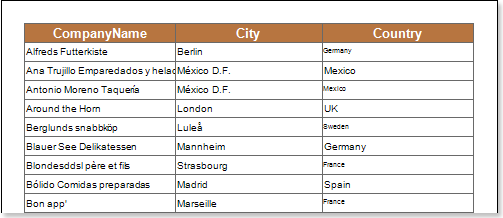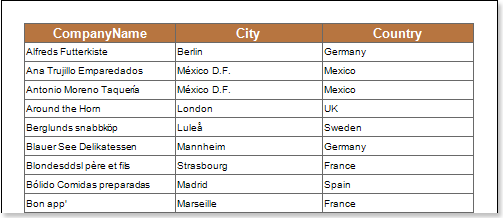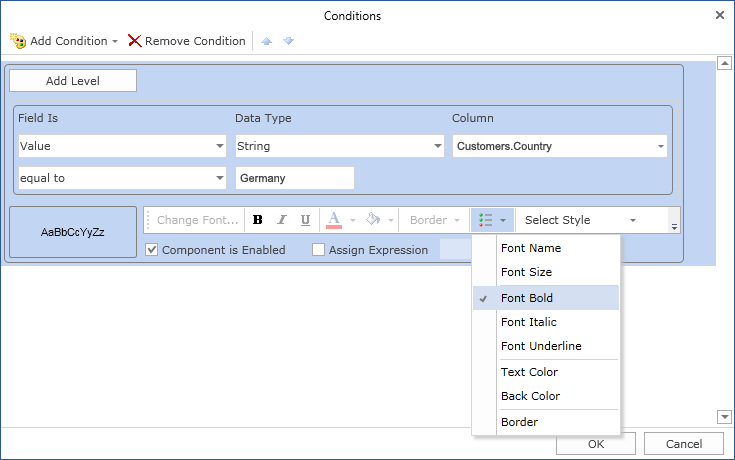Conditional formatting lets you apply borders to text components. The following image shows the report page.

for example,[ You can set borders for text components that contain German in the Country column. Select the text component with the {Customers.Country} expression in the DataBand and call the condition editor. Next, we need to set the conditions. Select the Customers.Country data column as the first value and German as the second value. It also sets the operation's comparison to the contained value. Change formatting parameters. In this case, set a border. You can configure the display of borders. The following options are available: All (Show all borders), None (Show no border), Top (Show top border), Left (Show left border), Bottom (Show bottom border), Right (Show right border). The following image shows the Condition Editor dialog box.

After making changes to the report template, the reporting engine performs conditional formatting of the text components according to the specified parameters. In this case, the border will be set on the text components that match the specified criteria. The following image shows a page of a report rendered with conditional formatting.

As you can see in the picture above, a border is set for the text component of the Country column, which contains German.




